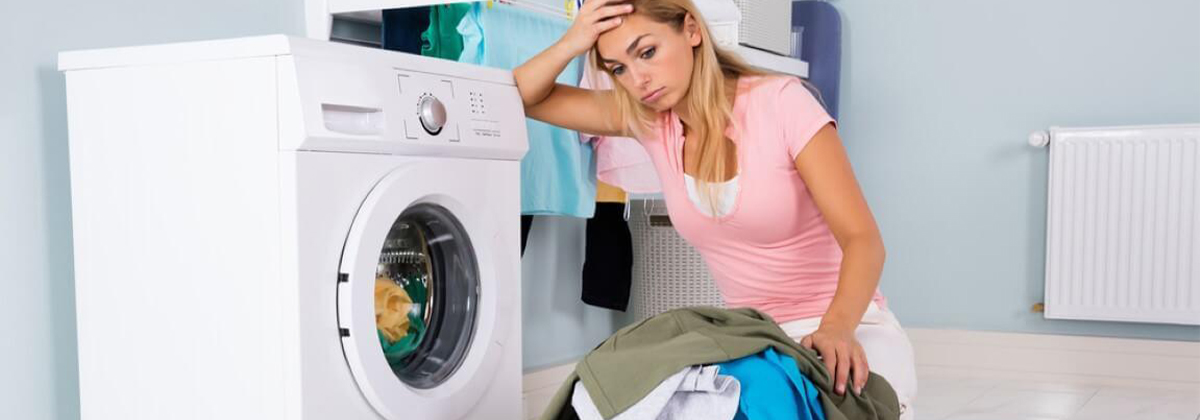28 Nov Why are the Clothes not Clean in the Washing Machine?
It can be frustrating not to clean your clothes after they come out of the washing machine. Washing machines should be able to remove most food or sweat stains and foul odours in a quick wash at low temperatures and using a small amount of detergent. However, you may notice that your clothes are still smelly and dirty after a long wash or several washes. If your washing machine isn’t cleaning clothes well, there’s no need to panic. As long as your washing machine is receiving water, spinning clothes, and draining excess water, it should still be able to clean your clothes. With the help of the solutions introduced in this article, you can wash your clothes in the washing machine, and they smell good again. So stay tuned to the end.
The main reasons for clothes not being washed cleanly in the washing machine
Using the wrong detergent
Usually, the most crucial reason for clothes not being clean after washing is the use of inappropriate detergents. Low-quality or cheap detergents don’t have enough cleaning agents such as surfactants and enzymes to remove most stains, pus and sweat stains from the body. If the contaminated particles aren’t removed from the fabric, dissolved in water, and then removed from the wash cycle, they will be redeposited on the garment, causing the garment to look dull and old. Take your time and get a suitable and efficient detergent for your washing machine. It’s better to use strong detergents for soiled clothes and mild detergents for lightly soiled clothes.
The washing tub or the interior of the washing machine is dirty
When was the last time you cleaned your washing machine tub? If your answer is “I don’t remember” or “never”, this may be why your clothes remain dirty after being them out of the washing machine.
Although the washing machine looks clean because of all the detergents in it. But sometimes, you have to clean the inside of the washing machine to remove all the dirt and particles that accumulate on the surface of the washing tub over time. To clean the tub of your washing machine, you will need the following materials:
- white vinegar
- Sponge
- Toothbrush
First, pour two cups of white vinegar into the washing machine and run a hot wash cycle (without putting the clothes in the tub). Vinegar kills bacteria and any foul odour caused by mould.
Then, mix vinegar and warm water in a bucket ratio of 1 to 4. Using a sponge and toothbrush, clean all the nooks and crannies of the interior, including the detergent tank, fabric softener tank, and the inside of the door.
Finally, run an empty wash cycle with warm water for the final wash. Repeat this cleaning cycle every six months or whenever you notice a terrible smell in the clothes coming out of the washing machine.
Stubborn stains
The washing machine is suitable for removing dirt, sweat and foul smell from clothes, but some stains require preliminary washing or special detergents. Your washing machine may have settings to remove specific stains, such as blood. However, stubborn stains such as grease or paint may be more challenging to remove. To deal with stubborn stains, wash your clothes at the highest temperature allowed for your fabric, increase the washing time, and ensure the stain is removed before drying. Removing the stain after the clothes have dried will be much more difficult.
Inappropriate category
How clothes are placed, especially in top-loading washing machines, can affect their cleanliness. Wrapping clothes around each other or bunching them all together can reduce the washing performance because the clothes can’t move freely in the water. If the clothes don’t move individually in and out of the water, they can’t return. Twirling and turning the clothes is necessary to push the water and detergent into the fabric. To ensure that the clothes move freely in the water, place each garment separately in the tub.
Overloading the washing machine
The washing machine has a water level limit indicator that prevents the washing machine from overflowing. If too many clothes are in the machine, not enough water will enter the tub to clean the clothes. The clothes must move freely with the agitation of the device. Overloading may cause clothes to tangle, bunch up, or not move in the tub.
Improper water temperature
Hot water is essential for removing dirt and grime from heavily dirty clothing, but hot water will also remove most light soiling. If you use cold water, choose a detergent suitable for cold water. Otherwise, your clothes may not come out as clean as they should. Check the fabric care label on your garment to ensure the proper temperature setting. Although cold water saves energy, many contaminants can only be removed with hot or warm water.
Poor water quality
Hard water containing large amounts of minerals is the most crucial reason for clothes fading after washing. Suppose your washing machine’s water supply is hard water. In that case, you should use a water purifier for your washing machine’s water inlet valves to protect your clothes and help the detergent work better.
Clogged drain pump filter
If our washing machine isn’t draining properly and the problem isn’t with the drain hose, the drain pump filter may be blocked. When the drain pump filter gets clogged, water drains and your clothes smell musty. Although small parts such as keys, jewellery or clothing buttons may block the drain pump filter, without these parts, this filter will become so blocked over time that it will affect the performance of the washing machine. To clean the drain pump filter in a front-load washing machine, start by unplugging the washing machine.
After disconnecting the power, find the pump filter. There’s usually an access hatch at the bottom of the washing machine. Place a shallow container under this valve and open it; In this way, excess water isn’t poured on the ground. Turn the filter knob counterclockwise and let the water drain into the container.
Obliterate the pump filter and clean the residue in it. Then put the filter back and turn it clockwise until it is firmly in place. Close the access valve and run a test wash cycle to see if the water drains properly.
Yellowing of white clothes in the washing machine
Remaining soil and contaminated particles in clothes
The yellowing of white clothes is usually caused by contaminated particles that aren’t removed from the clothes during the washing process. These particles will be difficult to remove if you use low-quality detergents and cold water. Look at your white sheet; if the border and edges are white but the centre is yellow, it’s due to body sweat. You should use solid detergents and hot or warm water to whiten the stained sheets.
Excessive use of bleaching
Another reason white clothes turn yellow after washing is the excessive use of bleaching agents. Although these substances can make your clothes white and shiny, using too much bleach can damage the fabric fibres and even cause them to turn yellow. Many kinds of cotton and synthetic fibres have a yellow inner core, and over-bleaching can expose this yellow core.
Iron bacteria in source water
Too much iron in the water source can also cause white clothes to turn yellow after washing. Iron bacteria in your water source will settle on your clothes and cause them to turn yellow or eventually brown. Installing a water filter on the water inlet is better for keeping your clothes white.
Creating holes and tears on clothes
Spraying bleach drops
Using too much bleach can cause small holes in your clothes. A drop or slight bleach can cause a spot in your clothes. Notice that bleach is a solid substance and must be diluted with plenty of water to use on dresses.
Zippers remain open
If you leave the zippers open or don’t close the hooks, small tears may occur on the clothes due to these parts getting stuck on the clothes, incredibly soft and thin fabrics or knits. Objects left in the pocket can also cause tearing. Always check dresses before washing, as a small hole can quickly become a big problem.
More wrinkles on clothes
Incorrect classification of clothes
Mixing heavy clothes like jeans with lighter shirts can cause a lot of wrinkles in your clothes. If you mix heavy and spare clothes in the wash, separate them before putting them in the dryer. Shake each garment well before placing it in the dryer.
Choosing the wrong wash cycle
Using the wrong wash settings will make your clothes not clean properly. Check the instructions on the clothing label to find the appropriate washing temperature and cycle; Some clothes need cold water, while linen and towels need hot water to clean.
To wrap up
If you don’t have the opportunity or patience to wash your clothes, you can count on the specialized NeatEx team. With the most advanced tools and the latest knowledge, we will deliver your clothes of the best quality as soon as possible. Don’t damage your valuable clothes with improper washing. NeatEx washes your clothes best and ensures you have clean and tidy clothes.




Sorry, the comment form is closed at this time.